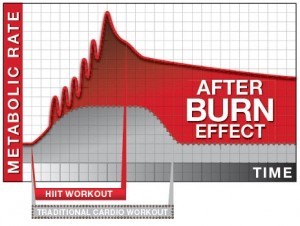Here’s an interview I did to discuss HIIT training, a few years back, for Fitness AZ Foothills:
HIIT was named the biggest fitness trend of 2014 by the American College of Sports Medicine. Yay for HIIT!… but what the heck is it exactly? Most people I asked had no idea, so I went to Adam Petropolis, for the inside scoop. Adam is not only a lifelong athlete who’s worked in the fitness industry for over 15 years, he holds a BS in Exercise & Wellness from ASU. Here, Adam tackles everything you need to know about HIIT…
Trainer Q&A: Adam Petropolis
Q: What is HIIT training and how can I do it at home/on the road?
A: HIIT stands for High Intensity Interval Training. It’s any continuously alternating period of high intensity and low intensity exercise. An example would be running then walking, running then walking… the idea is to bring your heart rate up and then bring it down. People want to complicate it, but HIIT really is that simple.
When you train for endurance and have a steady heart rate, your body is working efficiently. With HIIT, you intentionally force your body to work inefficiently. I know that sounds counter-intuitive, but think of it like highway driving versus city driving. When highway driving, you’re at a constant speed – you’re on cruise control! – and the car burns gas efficiently. But city driving is full of ups and downs and stops and starts and burns way more gas. HIIT training works the same way.
One study showed that overall fat loss was 9 x more with HIIT training than conventional cardio. Researchers haven’t really nailed down why you burn so much more fat, but one theory is EPOC – Excess post-exercise oxygen consumption – also known as the after-burn. HIIT has a far superior after-burn. You want to burn more calories when you’re not exercising – and HIIT makes that possible.

So how can you do HIIT at home? Start by putting a duration on time (say 5-10 minutes), then pick an exercise (jogging, jumping rope, jumping jacks, burpees, body weight squats), and set your interval time (1 minute on, one minute off), then alternate bursts of activity with periods of rest. It’s that simple!
HIIT makes a great at-home workout because it’s so individualized. Adjust the total time and interval time based on your personal level. What may be high-intensity for one person might be low-intensity for another. That change from low heart rate to high heart rate is what’s important – and what burns more gas. And with HIIT you can work out for less time with better results than cardio. Who doesn’t want that?

